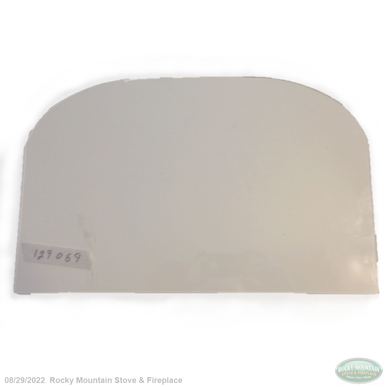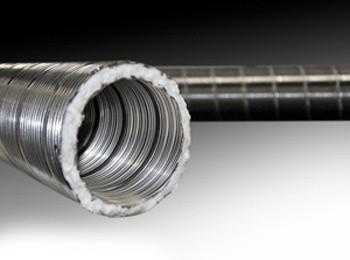This is my first post here. I moved to a house with a large brick fireplace and set out to find a wood stove. I got immensely lucky and found a 2004 Jotul F500 from the original owner, barely used, with paperwork, for $250. Needless to say, I hitched up the utility trailer and got my butt over there as fast as I could. The plan is to install it in my existing fireplace, which is all-brick with a hearth, and a 13x13 terracotta flue liner going up the brick chimney (1970's house).
It needs new front door glass/gasket since it broke when they moved. I have so many questions, so I guess I'll start. I can do my own research, and I've done a lot of it in the past few days. I've ordered the Woodburner's Encyclopedia, I've been reading the Jotul installation manual and going through NFPA211-2019 to better understand what I need to do for a reasonably-proper DIY install. With all of that out of the way...
-This is a 2004 model and the doors seem to shut properly. Should I swap out the gaskets anyway due to the age? As far as I can tell, this stove did not get heavy usage.
-I need to buy replacement glass. What are some reputable places to get this? I don't want to Amazon/ebay something like that. Are you supposed to use gasket cement on the glass gasket like you do with the others?
-On that note, what are some reputable online places to get other stuff? I'll need a bunch of random things to install this and I'd rather support a really good independent business than buy from some rando on Amazon. There are some fireplace stores nearby but I think they really only sell stuff they install, and not parts.
-The cement joints in between the fire bricks in the back of the fire box of my fireplace have some previous water damage and are crumbling. I installed a chimney cap when I bought the place, but some damage was already done. What's a good heat-resistant product I can use to repoint those joints? Same question about paint for the firebox. Once I clean it up I want to use a heat-tolerant paint to aesthetically make it better.
-I've noticed some folks use an inline damper/regulator thing on the exhaust side after it leaves the stove, and some don't. What's the purpose of that? Why would I need one?
-My chimney inspection showed some gaps in between the terracotta flues, and while they said it wasn't too big of a problem, they recommended a liner. For this reason, I think it would be prudent to run the stove pipe all the way up to the top and attach it there, for safety's sake - i.e. reducing any creosote buildup. Any experience doing it this way, that people can share? Any good DIYs?
-On that note, I was thinking that double-walled pipe would be best at reducing turbulent flow versus single-walled. Is there a safety advantage to double-walled? If double-walled isn't flexible, do they make some kind of oval or rectangle sections that I can squeeze through the built-in damper in the existing fireplace?
-The stove will sit on my hearth, but I know that code requires non-combustible stuff to be a certain distance in front of the stove and to the sides. What are you all using for that? Giant slate rock? Some kind of fire-resistant floor mat? I have a laminate wood floor underneath, which I assume would qualify as combustible.
Anyway, thanks for hearing me out!!
![[Hearth.com] First wood stove, 2004 Jotul F500. Lots of questions. Should I replace gaskets? Who are reputable vendors? [Hearth.com] First wood stove, 2004 Jotul F500. Lots of questions. Should I replace gaskets? Who are reputable vendors?](https://www.hearth.com/talk/data/attachments/300/300822-39f404bbfedf82b1a4d48623980bd49e.jpg?hash=M8Poo33cSa)
It needs new front door glass/gasket since it broke when they moved. I have so many questions, so I guess I'll start. I can do my own research, and I've done a lot of it in the past few days. I've ordered the Woodburner's Encyclopedia, I've been reading the Jotul installation manual and going through NFPA211-2019 to better understand what I need to do for a reasonably-proper DIY install. With all of that out of the way...
-This is a 2004 model and the doors seem to shut properly. Should I swap out the gaskets anyway due to the age? As far as I can tell, this stove did not get heavy usage.
-I need to buy replacement glass. What are some reputable places to get this? I don't want to Amazon/ebay something like that. Are you supposed to use gasket cement on the glass gasket like you do with the others?
-On that note, what are some reputable online places to get other stuff? I'll need a bunch of random things to install this and I'd rather support a really good independent business than buy from some rando on Amazon. There are some fireplace stores nearby but I think they really only sell stuff they install, and not parts.
-The cement joints in between the fire bricks in the back of the fire box of my fireplace have some previous water damage and are crumbling. I installed a chimney cap when I bought the place, but some damage was already done. What's a good heat-resistant product I can use to repoint those joints? Same question about paint for the firebox. Once I clean it up I want to use a heat-tolerant paint to aesthetically make it better.
-I've noticed some folks use an inline damper/regulator thing on the exhaust side after it leaves the stove, and some don't. What's the purpose of that? Why would I need one?
-My chimney inspection showed some gaps in between the terracotta flues, and while they said it wasn't too big of a problem, they recommended a liner. For this reason, I think it would be prudent to run the stove pipe all the way up to the top and attach it there, for safety's sake - i.e. reducing any creosote buildup. Any experience doing it this way, that people can share? Any good DIYs?
-On that note, I was thinking that double-walled pipe would be best at reducing turbulent flow versus single-walled. Is there a safety advantage to double-walled? If double-walled isn't flexible, do they make some kind of oval or rectangle sections that I can squeeze through the built-in damper in the existing fireplace?
-The stove will sit on my hearth, but I know that code requires non-combustible stuff to be a certain distance in front of the stove and to the sides. What are you all using for that? Giant slate rock? Some kind of fire-resistant floor mat? I have a laminate wood floor underneath, which I assume would qualify as combustible.
Anyway, thanks for hearing me out!!
![[Hearth.com] First wood stove, 2004 Jotul F500. Lots of questions. Should I replace gaskets? Who are reputable vendors? [Hearth.com] First wood stove, 2004 Jotul F500. Lots of questions. Should I replace gaskets? Who are reputable vendors?](https://www.hearth.com/talk/data/attachments/300/300822-39f404bbfedf82b1a4d48623980bd49e.jpg?hash=M8Poo33cSa)



